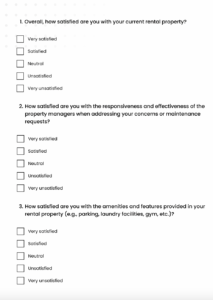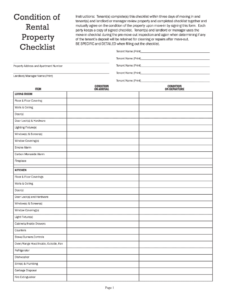Utilizing a standardized structure streamlines the information-gathering process, ensuring consistency and reducing the likelihood of overlooking critical details. It provides a professional and organized approach, fostering positive communication between landlords, applicants, and employers. This ultimately assists in making informed decisions, mitigating risks associated with tenant selection, and potentially fostering positive landlord-tenant relationships.
The following sections will delve deeper into creating and using these valuable tools, covering best practices, legal considerations, and example scenarios.
Key Components of an Employment Verification Request for Housing Applications
Effective verification requests contain essential elements that enable landlords to assess an applicant’s suitability thoroughly. These components ensure a consistent and comprehensive approach to tenant screening.
1: Applicant Information: Including the applicant’s full name, current address, and contact information ensures accurate identification and facilitates direct communication if needed.
2: Employer Information: This section should request the employer’s name, address, phone number, and the best contact person within the organization. Specifying a contact person streamlines the process.
3: Employment Dates: Verification of start and end dates of employment confirms the applicant’s work history accuracy and provides insight into their stability.
4: Income Verification: Requesting salary or hourly rate, payment frequency, and any additional income sources is crucial for assessing an applicant’s ability to meet rent obligations.
5: Position and Responsibilities: Understanding the applicant’s role within the company can offer further context regarding their professional background and stability.
6: Professional Conduct: Inquiries about attendance, reliability, and overall professionalism can provide valuable insights into an applicant’s character and potential tenancy.
7: Authorization and Signature Lines: Including a section for the applicant to authorize the release of information ensures compliance with privacy regulations and facilitates a smoother process.
A well-structured request includes clear, concise language and focuses on relevant information needed for a comprehensive tenant evaluation. This structured approach benefits both landlords and applicants by promoting transparency and efficiency in the application process.
How to Create a Landlord Employment Verification Request
Creating a standardized employment verification request form ensures consistency and efficiency in the tenant screening process. A well-structured template facilitates the collection of essential information, enabling informed decisions about prospective tenants.
1: Define Essential Information: Determine the key data points required to assess an applicant’s suitability. This typically includes employment history, income verification, and professional conduct.
2: Structure the Template: Organize the template logically, using clear headings and concise language. This ensures easy navigation for both the employer and the landlord.
3: Include Applicant Information Section: Begin with a section for the applicant’s full name, current address, and contact details to ensure proper identification.
4: Incorporate Employer Information Fields: Designate spaces for the employer’s name, address, contact person, and phone number for efficient communication.
5: Request Employment Verification Details: Include fields for employment dates, position held, and responsibilities to verify employment history.
6: Add Income Verification Section: Request salary or hourly rate, payment frequency, and additional income sources to assess financial stability.
7: Include Professional Conduct Inquiries: Consider adding optional questions regarding attendance, reliability, and overall professionalism.
8: Obtain Applicant Authorization: Include a signature line for the applicant to authorize the release of information to the landlord, ensuring compliance with privacy regulations.
A comprehensive and well-organized employment verification request contributes significantly to a thorough tenant screening process. Using a standardized template provides a professional approach to gathering crucial information, aiding in risk mitigation and fostering successful landlord-tenant relationships.
Standardized employment verification requests offer a crucial tool for landlords seeking reliable tenants. These structured templates facilitate the consistent collection of vital information regarding an applicant’s employment history, income, and professional conduct. A systematic approach to tenant screening minimizes risks, promotes informed decision-making, and contributes to positive landlord-tenant relationships. By leveraging these tools effectively, landlords enhance their ability to select responsible individuals, safeguarding their investments and fostering thriving rental communities.
Thorough tenant screening practices, facilitated by well-designed employment verification requests, represent a proactive step toward establishing and maintaining successful tenancies. Diligence in this process benefits all parties involved, contributing to stable rental agreements and harmonious communities. This emphasis on responsible tenant selection builds a foundation for long-term success in property management.



